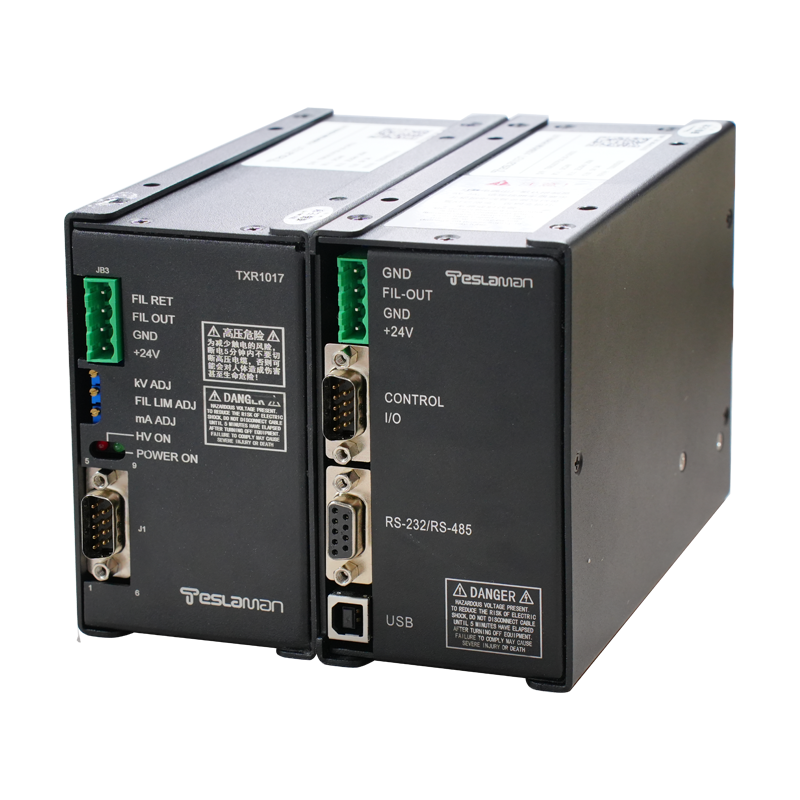High-Voltage Power Supply Energy Recovery Technology in Etching Equipment: Principles, Design, and Applications
1. Background and Significance
Etching equipment is widely used in semiconductors, microelectronics, and material processing, but its high-voltage power systems consume significant energy. In traditional etching, approximately 60% of energy is wasted as heat or residual electricity. High-voltage power energy recovery technology captures by-products (e.g., waste electron beams, reaction heat) and converts them into reusable electricity, reducing energy consumption by over 30% while improving efficiency and sustainability.
2. Technical Principles and Implementation
1. Energy Loss Mechanisms and Recovery Potential
• Energy distribution in plasma etching: High-voltage power ionizes reaction gases to form plasma, with ions bombarding material surfaces for etching. Only ~40% of energy removes material; the rest dissipates as waste electron kinetic energy, heat, or electromagnetic radiation.
• Key recovery targets: Kinetic energy from waste electron beams (recoverable: 20–30% in 100-kW systems) and residual thermal energy.
2. Core Energy Recovery Technologies
• Depressed collectors: Multi-stage collectors with potential gradients decelerate waste electron beams, converting kinetic energy into electricity. For example, reducing electron energy from –30 kV to –27 kV recovers ~10% of input power.
• Galvanic cell recovery: In wet etching (e.g., copper plate etching), a proton exchange membrane separates reaction zones to form a Cu/H₂O₂ cell, directly converting chemical energy into electricity (efficiency >55%).
• High-frequency inverter circuits: Three-phase rectification and switching circuits convert recovered DC into stable AC power for control systems, reducing grid reliance.
3. System Design Innovations
• Power topology: Dual-stage architecture combines a cathode power supply (high stability) and a collector power supply (high current output), with the collector floating on the cathode’s negative voltage for closed-loop energy flow.
• Control strategies: Embedded systems (e.g., ultra-low-power microcontrollers) dynamically adjust ion energy and flux based on real-time plasma monitoring, synchronizing energy recovery with etching precision.
3. Application Efficacy and Challenges
1. Energy-Saving Benefits
• Semiconductor etching systems reduce total power consumption by 25–30% while maintaining etching uniformity (>92%) and precision (minimum line width: 5μm).
• Wet etching equipment achieves 40% self-sufficiency in power supply after integrating recovery modules.
2. Environmental and Economic Value
• Treating 1m³ of waste etching fluid reduces copper ion emissions by 99.98% (from 2,370 mg/L to 0.45 mg/L), with recovered electricity powering wastewater treatment for zero-pollution operation.
• Equipment payback periods shorten to 2–3 years (e.g., 100-kW systems).
3. Challenges and Future Directions
• Stability issues: Plasma fluctuations cause circuit overloads. Solutions include adaptive impedance matching networks and solid-state current limiters.
• Material limitations: Proton exchange membranes (e.g., Nafion 117) degrade in acidic environments. Research focuses on 3D graphene composite membranes for enhanced corrosion resistance.
• System integration: Future work requires intelligent energy management platforms with digital twin simulations for optimized energy flow.
4. Conclusion and Outlook
High-voltage energy recovery is pivotal for green etching equipment. By capturing multi-level energy (kinetic, chemical, thermal) via closed-loop control, it achieves high efficiency (>30% energy savings) and low pollution. With wide-bandgap semiconductors (e.g., SiC modules) and AI algorithms, recovery efficiency may exceed 40%, advancing etching toward carbon-neutral manufacturing.




















